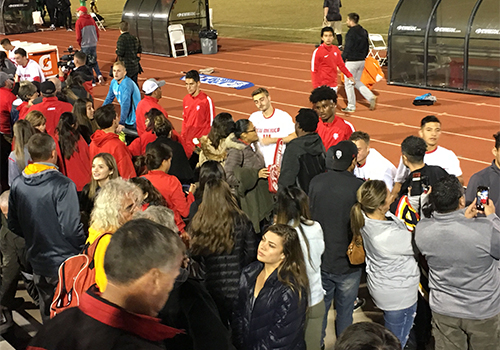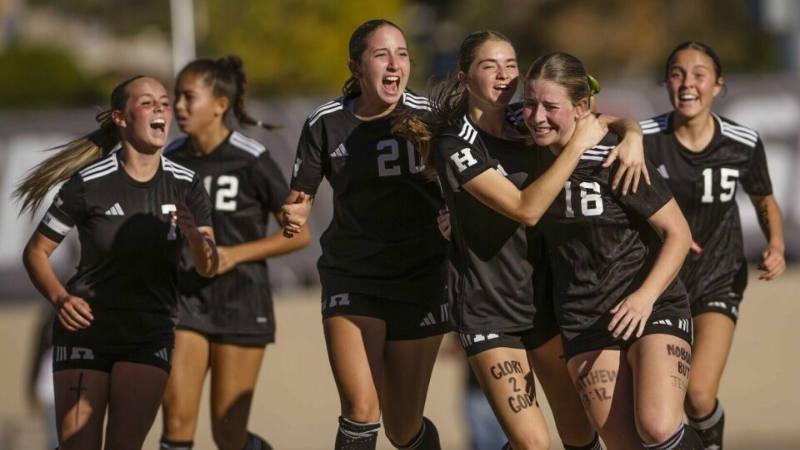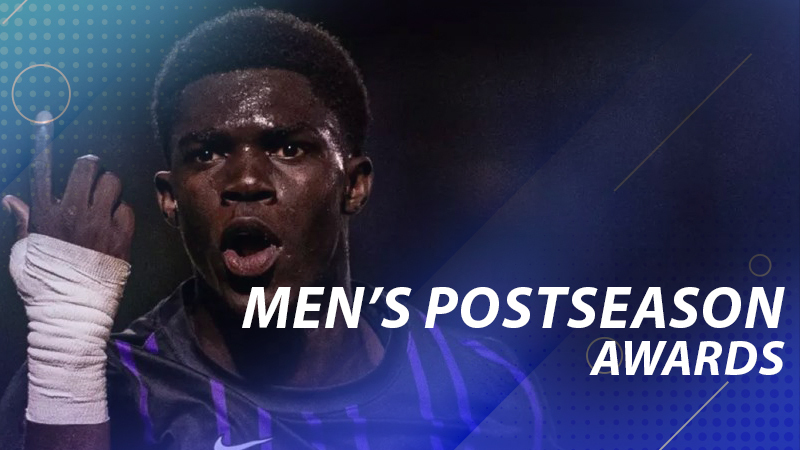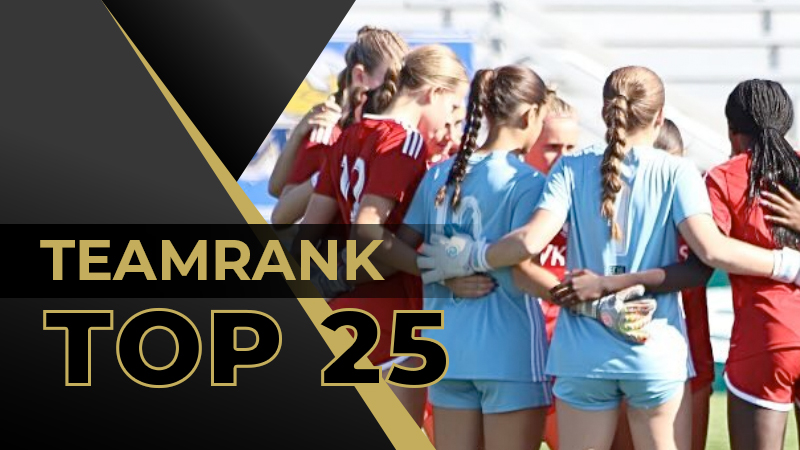New Mexico's final season: Coco
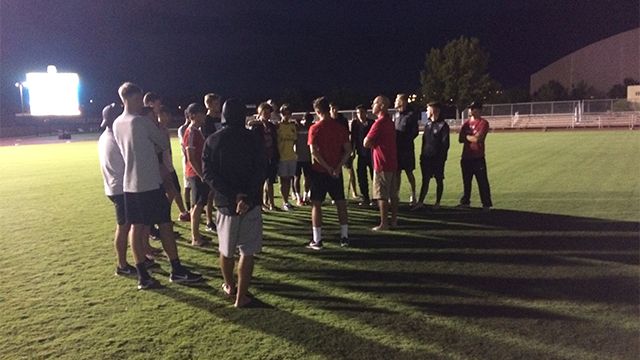
Less than a month before the start of last year’s college season, the University of New Mexico announced that, due to ongoing budget deficits and Title IX concerns, the 2018 season would be the final one for its nationally prominent men’s soccer program. This decision to cut soccer created a maelstrom of debate and controversy. The state’s politicians (among others) got involved. But for the Lobos players and coaches, there was still a season to play. This series is an insider’s deep dive into that final season, and the story of a team fighting for a proper ending. Be sure to read Part 1.
***
2. Coco
The Disney movie Coco is a story about overcoming a premature death. The main character, Miguel, navigates the Land of the Dead in order to reemerge happier and wiser, and with his gifts fully realized, back to his regular life.
Coco is playing right now, on this Thursday evening, August 23, 2018 at 8 p.m.
Tomorrow the New Mexico men’s soccer team plays its opening regular season game, a game being referred to as the “last first game” for the team. New Mexico is hosting No. 22 ranked Seattle University, a team that just happens to have an All-American player from Albuquerque.
To get the boys minds’ right, assistants Kelly [Altman] and Champ (Lucas Champenois) have arranged for a walkthrough on the game field. The players arrive in a trickle, in their usual groups: Simon and Antoine (speaking French); Gallo, Pichu, and Miguel (Spanish); and then Billy, Tom, Ford, Scotty, and Dorsey (English). The rest show up in ones and twos. They walk through the gates, across the track, and slowly towards the center of the field.
The only light comes from the scoreboard and a nearly full moon. There are also, however, the faint sounds of Coco playing in the background.
It just so happens that the unique architecture of the athletics complex at New Mexico features adjoining football and soccer stadiums. A set of cement bleachers leads up from the soccer field, and then plateaus in a walkway, before descending down the other side as the east side of the school’s Dreamstyle Football Stadium.
And tonight, the UNM Athletic Department is hosting a “Movie on the Field” night, featuring a free showing of Coco for the community. The event started at 7 p.m., so by the time the Lobo Soccer players arrive on their side of the complex, the Disney movie is in the middle of its Land of the Dead glory. Blankets are strewn across the football field; families are enjoying their free popcorn. The music of Ernesto de la Cruz hangs over the evening, bridging the divide between football and fútbol.
“Let’s get a really big, clear picture,” Fish says once everyone has arrived.
But first, there’s a video. For five minutes, the players watch from midfield as the season’s pre-game video is unveiled. It’s Champ’s work; he does most of the film editing. This particular footage will be played before home games. It contains montages of each player, to be used during introductions and when a player scores a goal. Intermixed are montages of previous Lobo glory. Shots of great goals and roaring crowds.
If the effect is to reminder this group of 20 plus, 20 somethings that they are a part of something with a long history, it’s unclear if the video hits the mark. But if the point is just to reiterate, before a big game, that these guys rock at soccer, then the mission is accomplished.
They all enjoy it. Thoroughly.
As it ends, Fish slips off his flip flops. He walks a small circle. “How good is this field?” he asks. To be a soccer player or coach, is to appreciate great grassmanship. Fish almost always comments of the state of the grass at each field upon which the Lobos play. But it is rarely better than at home. The Lobo soccer field is perfect. The synthetically grown Bermuda grass is thick and consistent. Everyone admires the handiwork of UNM’s turf manager.
Then the lights come on. Go ahead, Fish tells the players, walk around and picture what’s coming tomorrow night. Get your mind right. They do, some wandering to the far sidelines, and nearly around the entire diameter of the field, while others meander just a few yards before circling back. Each does his own mental preparation.
After 10 minutes of wandering and contemplating, the team reassembles at midfield. “Everyone bring it in,” one of the coaches calls out. The team huddles, arms over shoulders.
“Enjoy this,” Fish says. “In front of this crowd. On this field. With your friends.” He finishes. The players put their shoes back on and head for the parking lot.
Coco is still playing.
***
Kelly and Champ make an evening like Thursday’s possible. While Fish often operates as the CEO of the program (raising money, holding a weekly press conference, providing the overall vision for and assessment of the team), and Mike as the main teacher of tactics, Kelly and Champ serve as the major connection point between the coaches and the players. They carry out all sorts of the off the field tasks that an outsider would not expect as part of a Division I coaching job. They have constant contact with the players.
Kelly took the job as an assistant coach at UNM in 2017 because it meant both a step up in the soccer world and the opportunity to come home. “This is the dream job,” he says. Kelly grew up in the Albuquerque. The son of an orthopedic surgeon, he attended the prestigious Albuquerque Academy, before heading to Trinity University in San Antonio, Texas. There Kelly learned what it means to win. Like, all the time.
“That’s all we did,” he says. At one point his Trinity squad—Kelly played mostly as a right back—won 43 straight games. This still stands as an NCAA record. Kelly won a NCAA Division III National Championship his junior year, captained the team his senior year, and then kicked field goals for the football team with his last bit of eligibility.
(Kelly Altman, Second year Assistant Coach)
Kelly brings a calmness to an otherwise frenetic profession. It might be because, as Kelly often points out, the rest of his family is off saving lives. His father still practices medicine in Albuquerque. His brothers both went to medical school as well—one is now a professor; the other a surgeon.
Unlike the rest of the men in his family, however, Kelly can’t quite shake the game of his youth.
Kelly started his coaching career at his alma mater. After six years as a Trinity assistant, Kelly made the jump to Division I soccer, first for a year at High Point University, then to Valparaiso University. Along the way, he conducted an assessment of sorts of just what it means to be an assistant coach. He compiled an Excel spreadsheet of all the tasks associated with his job. When the total reached 341 separate tasks, he stopped counting. In essence the job boils down to enabling the head coach to coach, and the players to succeed as both athletes and students. It was just as his mentor at Trinity told him:
“Your job is to make me look good.”
That task is easier with some head coaches than others. To work for Jeremy Fishbein is an exercise in perseverance and survival. As one coach who previously worked for Fish told Kelly as he contemplated taking the job, “Fish micro-manages…If you want to get him off your back, you have get ahead of the curve.” Or to put it another way, Fish has tremendous energy, an insatiable attention to detail, and a burning desire to win.
Just a few days into Kelly’s tenure as a UNM assistant coach, he got a telling dose of Fish’s intensity. It started when the coaches got an email from an international recruiting agency. The email contained information about an intriguing player, along with some video footage. The player looked promising—really promising. Here’s how Kelly explains what happened next.
“I received the email; Fish received the email.”
Then
“Fish forwarded me the email.”
Then
“Fish sent me a third follow up email saying ‘can you please look at the email.”
Then
“He calls me on my office phone … and goes ‘Hey I sent you an email; did you get my email?”
This all happened over the course of a few minutes. Kelly grins and grimaces as he tells the story. “I was like are you kidding me right now, is this really happening?”
But perhaps as telling is what happens as a result of this interaction. “And so what I learned,” he says, was yes, to answer his emails more quickly, but also to go above and beyond. To be proactive. “I started calling the agencies once a month,” asking for their best players, he explains. He started to get footage of the best international players before the email blasts went out to other colleges around the country.
Because of Fish’s dogged persistence, Kelly went on the offensive. He became a more proactive coach and recruiter. He, to put it simply, got better. He had to for his own sanity. “Otherwise,” Kelly says, “he’ll just keep bugging you.”
***
Unbeknownst to the players, the effort to reverse the Board’s decision (an effort directed by Fish and lawyer Greg Williams) is entering into a new phase. The new focus is, basically, to ramp up the pressure and keep the matter of Lobo soccer’s survival in the news.
On Wednesday, two days before the regular season opener, Williams sends a letter to the university addressing what he sees as flaws in the school’s recently commissioned Title IX report.
“I am writing to call on UNM to explain to the public how the recently adopted recommendations for cut to the UNM athletic department comply with that portion of Title IX requiring that universities must provide financial assistance for members of each sex in proportion to the numbers of students of each sex participating in intercollegiate athletics,” he begins.
Here is a thumbnail sketch of New Mexico’s Title IX situation. The University, like most in the United States, tilts female in terms of enrollment. UNM is roughly 55/45 female to male in terms of its student body. For student athletes, however, the ratio is basically flipped. 56 percent of student athletes are male. And when considering scholarships for athletes, the situation is even more skewed: male student athletes get 63 percent of available athletic aid.
Like all schools that play FBS football, the fact that New Mexico awards 85 full scholarships every year for football almost guarantees a male/female equity problem.
As a step towards gender equity, New Mexico began supporting a women’s Beach Volleyball team in 2015. According to a Title IX audit conducted by an outside reviewer in 2018, UNM Athletics is not out of Title IX compliance yet, but it will be soon.
Since New Mexico cannot afford to continue expanding its options for women and stay in compliance through the expansion of female opportunities (and in fact is proposing to cut women’s ski and beach volleyball), Test I proportionality is the new goal. Cut men’s soccer and men’s ski and then radically alter the rosters of men’s and women’s track and cross country in order to nearly flip the 55/45 problem.
This takes some creativity. Most notably the proposal calls for the creation of a 43-member women’s cross country team (Coach Joe Franklin’s squad has recently won two NCAA National Championships) and 68 women on the track team (indoor and outdoor are counted together).
While this squad more than 100 female runners and jumpers might sound like a boon to female sport, it will be an unfunded one. The NCAA caps scholarships at 18 for women’s track and cross country, combined.
(Trying to make the Title IX numbers work, UNM Athletic Dept. Review, Supporting Docs)
Thus the argument Williams is making is that in its efforts to both trim costs and move into proportionality compliance with Title IX, UNM actually moved itself further away from real, meaningful gender equity. At least according to the financial side of Title IX enforcement.
Because Title IX in terms of college athletics (again, Title IX is about much more than just sports) is adjudicated through the three proportionality tests, but also a financial assistance component (and a third equal benefits test). Whatever the ratio of participation, Title IX requires that an institution spend proportionally on its athletes.
Williams points this out, in bold, at the end of his five page letter:
“The main point is clear: adding significant numbers of female walk-ons without increasing grants-in-aid to females will make UNM significantly less compliant with Title IX than it is now.”
Williams requests an answer from the UNM administration within a week. Otherwise, he promises, “I will direct this matter to any proper governing authorities.”
***
The week of practice leading up to the Seattle game is also the first week of classes at the University. The freshman are now, finally, intercollegiate student-athletes. Perhaps it’s the distractions that cause a notable downtick in intensity and execution.
Mike stops one pre-Seattle practice midway through, and in a measured, but clearly frustrated tone, demands more. “This is nowhere near the intensity or focus we need,” he says. “You have one hour…you’ve got to turn things around.”
The backline remains a concern, particularly in handling deep, attacking balls. It’s not a matter of desire for the unit. They work hard and want to get better (“They take it personally,” Kelly confirms), but they simply haven’t logged enough hours on the pitch together. The players are still feeling each other out, the result of so many new players playing big minutes.
The connection between a new keeper and a newly assembled backline is one bound to cause some problems. During one scrimmage, Ford drills Billy directly in the back with a clear out boot, from point blank range. Billy stays down for several minutes (which inspires almost no reaction from the coaches, who are particularly well-versed in the “soccer injury”).
Another early season distraction for the team is the issue of redshirting. Fish meets with the freshman throughout the week regarding their role on the team. Several freshman, Gallo, Fetterly, Omar, and Miguel figure to get significant minutes. So there is little to decide for them. But for the rest—Elijah, Ben, Nick Williams, Anthony, Julian, and Carlos—there is a decision to be made.
The conversations about whether to stay or go, whether to redshirt or play, are exceedingly difficult. Ben, for one, considered it the worst part of whole fall. “I told Fish that I wanted to redshirt,” he says. “He got a little angry when I told him. He felt semi-betrayed that I was going to look at another school.”
In his first press conference of the season, on Wednesday of Seattle week, Fish works hard to project a business as usual demeanor.
But the first question is a zinger: “Coach, how hard is it to switch your mentality from this big long fight that has played out over the summer?”
Fish: “I don’t think it’s been that difficult…you have the ability to compartmentalize things…collectively I don’t think we’ve missed a beat.”
Next question: “What has kind of been the fallout of this whole situation...?”
Fish: “We’ve had four guys transfer since May who would have played significant roles on this team…Of course there have been some effects.”
Question: “Is your team coming in even more motivated?”
Fish “I don’t think it’s a motivational tool; our guys are about this season…What’s the final thing? It’s not like we’re going to die at the end of the season….Time will tell.”
After Fish, Simon and Ford take over. Their responses are clear and cogent. They seem like old pros despite the fact that both are taking on newly prominent roles.
Simon: “Of course it’s a regrettable situation, but we have a job to do…there’s a lot of distractions…”
Question to Ford: “You’ve been waiting in the wings as a local kid. Are you ready to start?”
Ford: “Growing up in ABQ…everyone wants to be a Lobo…I don’t think we need to prove anything to anyone…”
***
The team gathers in the meeting room an hour and ten minutes before game time. By this point they know their Seattle counterparts inside and out. They have watched film and studied the InStat reports on Seattle. “You guys should be really excited,” Fish tells the team. This is the type of game that they came to New Mexico to play.
“You’re not here to play [expletive] teams,” Fish says. “It’s going to come down to moments, and I think in those moments we’re going to be really, really good.” And then there’s the fact that this is a home game. “You’re fit. You’re prepared,” Fish reminds them, “And you’re playing at altitude.”
The players make the walk up the hill to the stadium. The place is already full. The women’s team, at the start of a season that will end with a Conference championship, is playing first.
Fish leaves the team and ascends to the top of the stadium bleachers. He sits alone as the minutes tick down on the women’s game. “I can barely function with all of this,” he says to no one in particular.
(The last thing before every game…)
Warmups, followed by introductions, and then the National Anthem (which always seems to cause breaks and crackles in the stadium’s sound system). The Lobos wear all white. Ford is wearing turquoise. Finally, it’s game time.
The Lobos come out in a 4-4-2. Ford in goal; Tom, Billy, Dorsey, and Barreiro on the back line; Taylor, Scott, Baily and Simon in the middle, and Puig and Antoine up front.
For Ford, who has waited for this opportunity to start for his hometown Lobos for more than three years, there’s some anxiety to work through.
“So nervous for the first 25 minutes,” he says. And just four minutes in, there’s a near crisis. Reacting late to a relatively benign Seattle delivery from the left side toward the top of New Mexico’s box, Parker tries to punch the ball out. But he misses. The stadium holds its breath as the ball bounces towards the goal, just missing outside the right post.
At 24 minutes, Puig gets New Mexico going. After a sloppy first touch by a Seattle defender on a short throw in, Puig pokes the ball away. Then with three defenders attempting to recover possession, Puig dribbles towards the top of the box, stumbles through an attempted tackle, and delivers a left-footed shot. This caroms off Seattle’s final man back, right to Antoine. The senior from France deposits it safely in the lower left corner. “Goal New Mexico!” roars the PA announcer.
Antoine parades towards the corner, arms outstretched to the roaring crowd. Within seconds, Taylor, Dorsey, Bailey, Tom, Billy, Scotty, Barreiro, and Simon meet him at the flag—each jumping up onto the gathering as he arrives. As for Puig, he waits calmly in the box and then, when all the jumping around is done, he gives Antoine a high five. “The attacking group is going to be really special,” Puig will say at the end of the night.
To make matters even better for the Lobos, one of Seattle’s defenders involved in the play—their Senior captain, 6-foot-4 Nathan Aune (who just happens to be the WAC Preseason Defensive Player of the Year, and on the Hermann Trophy watch list)—draws a red card as New Mexico celebrates is first goal of its final season. “I play with my heart on my sleeve,” Aune says of his style. “I take everything personal.” In this case it backfires. Seattle will play a man down for the rest of the contest.
Six minutes later, Puig strikes again. This time Tom comes up from the back to deliver a cross from the left side. Omar, having just checked in for his first regular season action as a college player, heads the ball back into the center where Puig one-times it into the net. “Goal New Mexico!” This time the whole team meets in the corner. Antoine piggybacks on Puig; Omar on Dorsey. 2-0.
Still, down 2 goals and 1 man, Seattle hangs in. A couple of minutes before halftime, the Seahawks get the first corner kick of the game. An out-swinger is launched, curving nearly to nearly to the top of the 18 yard box. There, Seattle’s Julian Avila-Good heads a bouncer through a cluster of players, right behind Barreiro’s back, into a narrow door on the right side of the goal. Ford never sees it. Goal. 2-1. Halftime.
The second half turns into a celebration. Five minutes in, Tom launches a ball from midfield to a streaking Puig. A Seattle defender, filling the gap where Aune would usually knock down everything (The scout on Aune earlier in the week: “Kind of a donkey…but he likes contact.”) misplays the ball. Puig cleans it up. “Goal New Mexico!” This celebration is muted by Puig cramping in the August heat, but 3-1 certainly feels good.
The teams trade goals during the last 20 minutes. Seattle earns several corners in succession and eventually knocks a goal in off a rebound. 3-2. Ten minutes later, New Mexico responds, essentially ending Seattle’s threat. Scotty fires from the top of the box, forcing a diving block by Seattle’s keeper. Omar steps ahead of his defender and scores the rebound. “Goal New Mexico!” Drenched in sweat, Omar races towards the home bench where he is mobbed by all of his teammates—reserves and those playing. Once released, he looks to the sky. 4-2.
The crowds counts down the final seconds until the horns blows. Game over; Lobos win.
After the contest is over, the players and coaches head for the railing that separates the stands from the track (which surrounds the field). Parents, girlfriends, friends and all other manner of well-wishers are waiting. So too are dozens of boys and girls, many of whom are wearing the Lobo Soccer Camp t-shirts. Jeongwon Choi, the program’s part-time Director of Operations, hands out posters to the kids and Sharpies to the players. An autograph session ensures.
The sense of relief is palpable. After everything that has transpired, it feels good to think about a game again. “Lots of emotions today,” Fish tells a reporter. “It was a hard one to get going but we’ve got a confident group, I couldn’t be prouder of our guys.”
(After the win versus Seattle, the Lobos greet their fans at the rail)
There are plenty of attaboys to go around, but, as always, the guys that score goals get the most credit. Puig’s 5 points (2 goals and an assist) and Omar’s goal and assist stand out.
For Omar, the game had special meaning. “I’m from Seattle,” he says, “So I’m playing against all my friends.” Seattle University and UNM had actually been Omar’s final two in the recruiting process. “When I finally got that goal it was a relief,” he says, toweling off after the contest. “It was great because I felt like it welcomed me to my new crowd, to my new home, it was exciting.” Indeed, Omar works his crowd after the game, smiling and chatting with every child who wants his autograph.
The next day’s Albuquerque Journal has a picture of Puig and Antione on the front page. The headline inside: “Fans Give Lobo Soccer a Feel-Good Moment, and Vice Versa.” Indeed.
Or as another outlet said it, the Lobos started their ending right. “If this is the last first game for the University of New Mexico men’s soccer team,” says one writer, “the Lobos certainly made the best of it.”
Ryan Swanson is an Associate Professor at the University of New Mexico. He studies the role of sports in America, and is the author of the recently released The Strenuous Life: Theodore Roosevelt and the Making of the American Athlete.
Headlines
- Recruiting Roundup: December 15-21
- How Do I Get Scouted by TopDrawerSoccer?
- 2026 Women's Division I Transfer Tracker
- 2025 Men's DI Postseason Awards
-
Rocky Mountain High School Roundup

- Niko Markovic Selected First in MLS Draft
-
Commitments: Defender Swaps Coasts

- TopDrawerSoccer TeamRank Update - Girls
- 2026 Major League Soccer Draft Results
- Women's College Postseason Freshmen Top 100

